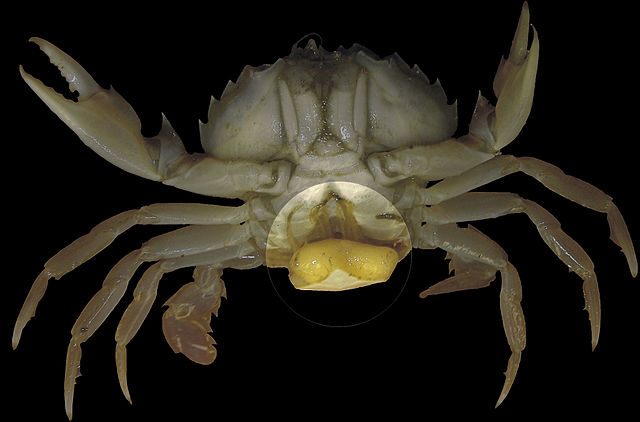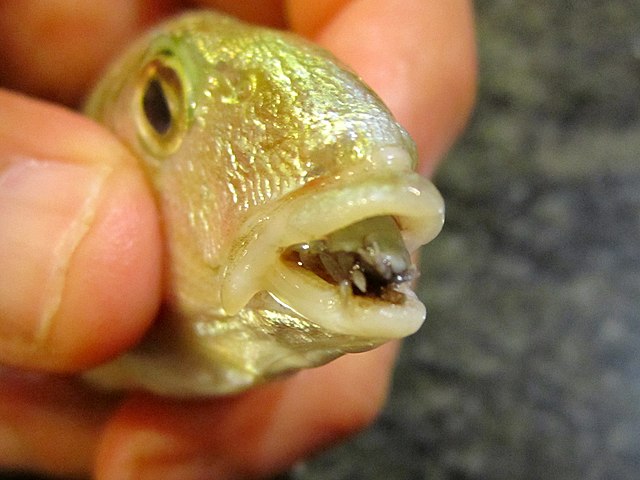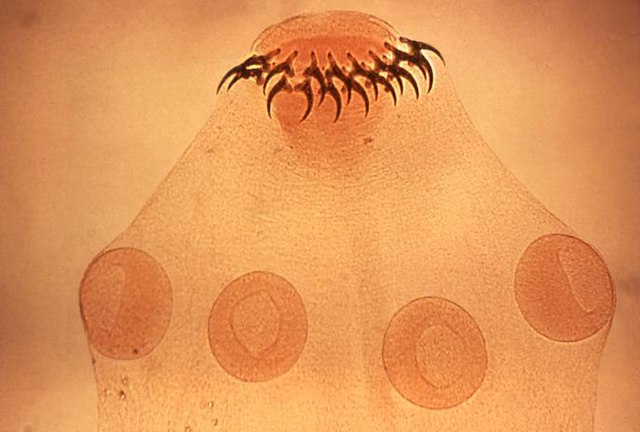Parasitic castration is the strategy, by a parasite, of blocking reproduction by its host, completely or in part, to its own benefit. This is one of six major strategies within parasitism.
Crab with egg sac of the parasitic barnacle Sacculina carcini. The parasite stops reproduction in its host, the crab, and stimulates the female crab to disperse parasite eggs with the same behavior that she would normally use for her own eggs.
Parasitism is a close relationship between species, where one organism, the parasite, lives on or inside another organism, the host, causing it some harm, and is adapted structurally to this way of life. The entomologist E. O. Wilson characterised parasites as "predators that eat prey in units of less than one". Parasites include single-celled protozoans such as the agents of malaria, sleeping sickness, and amoebic dysentery; animals such as hookworms, lice, mosquitoes, and vampire bats; fungi such as honey fungus and the agents of ringworm; and plants such as mistletoe, dodder, and the broomrapes.
A fish parasite, the isopod Cymothoa exigua, replacing the tongue of a Lithognathus
Head (scolex) of tapeworm Taenia solium, an intestinal parasite, has hooks and suckers to attach to its host
The parasitic castrator Sacculina carcini (highlighted) attached to its crab host
Human head-lice are directly transmitted obligate ectoparasites




